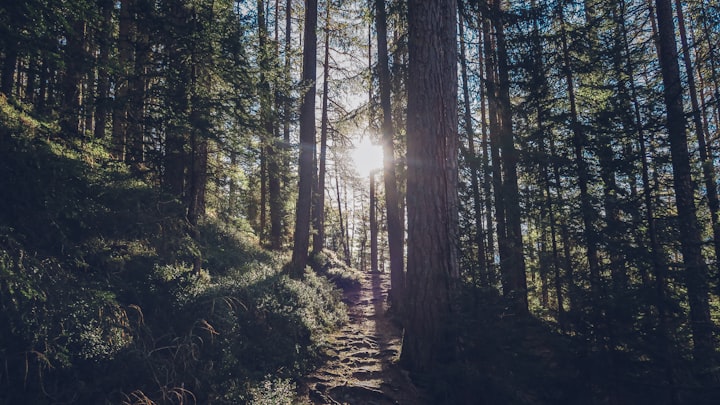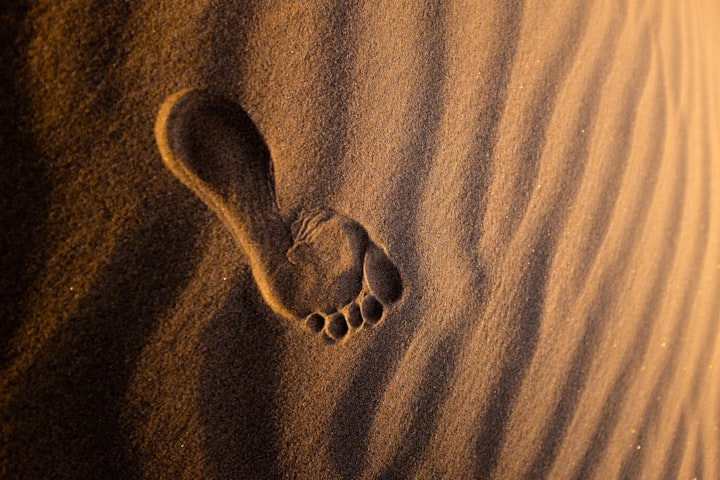10 Ideas to Improve Mental Wellbeing by Getting Back to Nature
Time to step outside for some ecopsychological therapy...

Spending time in nature has been scientifically proven to increase physical and mental wellbeing. It can be as easy as a walk in a park. If you don't live near a park or forest then a beach or even a garden will do.
Being one with nature can have lots of positive benefits from…
- Improving your mood.
- Reducing feelings of stress, anxiety, or anger.
- Improving physical wellbeing by being more active.
- Helping you to take a break and disconnect from a busy, potentially overly digital lifestyle.
The more digitally advanced we become it seems the less time we spend in nature. If you do one thing today make a promise to yourself to get back to nature to improve your overall health.
***
The Link between mental wellbeing and nature
Research into ecotherapy (a type of mental health treatment that involves doing activities in nature to improve wellbeing) has shown that spending time in green spaces or even by the water can have a calming effect on anxiety and help with mild to moderate depression.
It’s a combination of getting those steps in, cardio exercise, and taking a relaxing break from your regular schedule. Being in natural light can also help with seasonal affective disorder (SAD), a type of depression that affects people mainly during the long, dark winter months.
10 ideas to improve your physical and mental wellbeing by getting back to nature…
***
1. Growing your own vegetables
It’s also a misconception that you need a garden to grow your own vegetables. Got a window or a balcony? That is all you need to create your very own growing space. If you don’t have a garden, you could apply for an allotment (UK) Growing your own not only gives you a sense of achievement it can taste better too! Grow food together with others. Join a community gardening group or food growing projects in your local area.
2. Fruit picking
Go fruit picking. During the spring and summer months a lot of local farms or orchards you pick fruit to buy. During the Autumn you might be able to even go pumpkin picking!
Fruit finding. You might also find fruit growing in urban spaces too such as blackberries, but be careful not all berries are edible!
Try foraging. This means picking fruit and other edible foods in nature. This is something that can be done all year round too!
3. Bringing nature home
Bring more plants into your home. Learn to care for them. Not been good with plants in the past? Don’t let this stop you from growing plants from seeds on the windowsills.
Take photos in nature. Use the photographs as backgrounds on a mobile phone, tablet or computer screen, or print and put them up on your walls.
Collect natural items. Collect rocks, shells, feathers and cones and use them as decorations.
Open the windows and let in the ‘outside’ sounds. like birds or if living in a built up urban area listen to recordings or relaxation apps that play sounds from nature from rainfall to birdsongs or the swashing of waves.
4. Exercising in the outside world
Take a gentle walk and aim for those magical 10,000 steps.
Try exercising outside. Go for a gentle jog or run to through a local park. Some parks now have exercise areas (just remember to take some hand sanitiser with you). Do yoga outdoors or download a fitness app workout in a safe outside space. Some gyms now offer outside exercise classes!
Become a rambler. Make new connections, be outside more and get active by joining a local walking or rambling group.
Follow a woodland trail. Make walking a little more fun by following a woodland trail. Some woodland sites have apps where you can go searching…for the Gruffalo!
Try geocaching. Geocaching is all about looking for hidden items in outdoor locations, using a mobile phone.
5. Getting creative with nature
Draw scenes from nature. Write a poem or start a blog about your outside adventures and inspire others to get out in nature more!
Create a nature scrapbook or journal. Collect flowers, feathers use them to decorate your pages.
Make a mini garden or terrarium. using real plants, soil, stones and anything else you may have collected from your time spent in nature.
6. Connecting with others outside
Eat meals outsides. As many restaurants and pub gardens open sit outside and enjoy your time with family and friends. Have a family picnic or barbecue in a local park or on the beach (some parks and beaches have designated barbecue areas, but check this is okay or that you don’t need to book).
Meet with your friends and family to arrange a fun nature trip together.
7. Help the environment
Go on a litter picking walk. Not only are you helping the environment you are also getting those all-important steps in too!
Plant helpful plants that bumblebees love! Start attracting more nature to your garden, balcony or windowsills.
Build an insect hotel. Bugs can be the unsung heroes of our ecosystems. Maybe in time to start encouraging them into the garden along with other wildlife.
8. Connecting with animals
Go wildlife watching. If you don’t live near the countryside or the beach, check out a local park for squirrels, birds, insects, and ducks. You will be surprised what you notice when you start paying attention to what’s around you!
Build a birdbox and/or set up a feeder outside a window. You never know who might move in. We used to have a TARDIS (from Dr. Who) birdbox and a family of Sparrows moved in for a while. Birdwatching. The RSPB has plenty of information including a free spotting guide on their website.
Volunteer at a local animal shelter. Animals can be great for our wellbeing, especially cats and dogs. If you don’t have a pet of your own why not try volunteering at a local animal shelter or offer to pet sit!
Take part in nature surveys. This might involve counting the number of birds, animals, or insects in a particular area or season or reporting on individual sightings of wildlife.
9. Being mindful in nature
Learn to disconnect from devices and reconnect and be fully present to nature.
Find things to see, touch, hear, taste and smell. for example, the feeling of grass under your feet, breeze in your hair, and sunlight on your skin. Try the 5,4,3,2,1 technique when out and about in nature, i.e. 5 things you can see, 4 things you could touch, 3 things you could hear, 2 things you could potentially taste (but please don’t if harmful to you), and 1 think you could smell right now. Then take a really deep breath, hold for a slow count of 3 then breath out slowly.
10. Reduce your carbon footprint
Look at some ways that you can reduce your carbon footprint and help to protect nature.
The links in this article are mainly related to UK based organisations and charities. Not based in the UK? Leave your links to nature, such as local allotment and community gardening groups, walking groups, and nature charities in the responses 👇
Disclaimer: This article is solely for informational purposes and represents the writer’s personal opinion. If you are struggling with your wellbeing please seek professional advice and support if required.
References:
Ideas to try in nature | Mind, the mental health charity — help for mental health problems (accessed May 2021).
Ecopsychology: How Immersion in Nature Benefits Your Health — Yale E360 (accessed May 2021).
About the Creator
Trisha Dunbar
Rambling of written words | Reader of things | Drinker of coffee | Doer of stuff | Welcome to my profile 😊






Comments
There are no comments for this story
Be the first to respond and start the conversation.